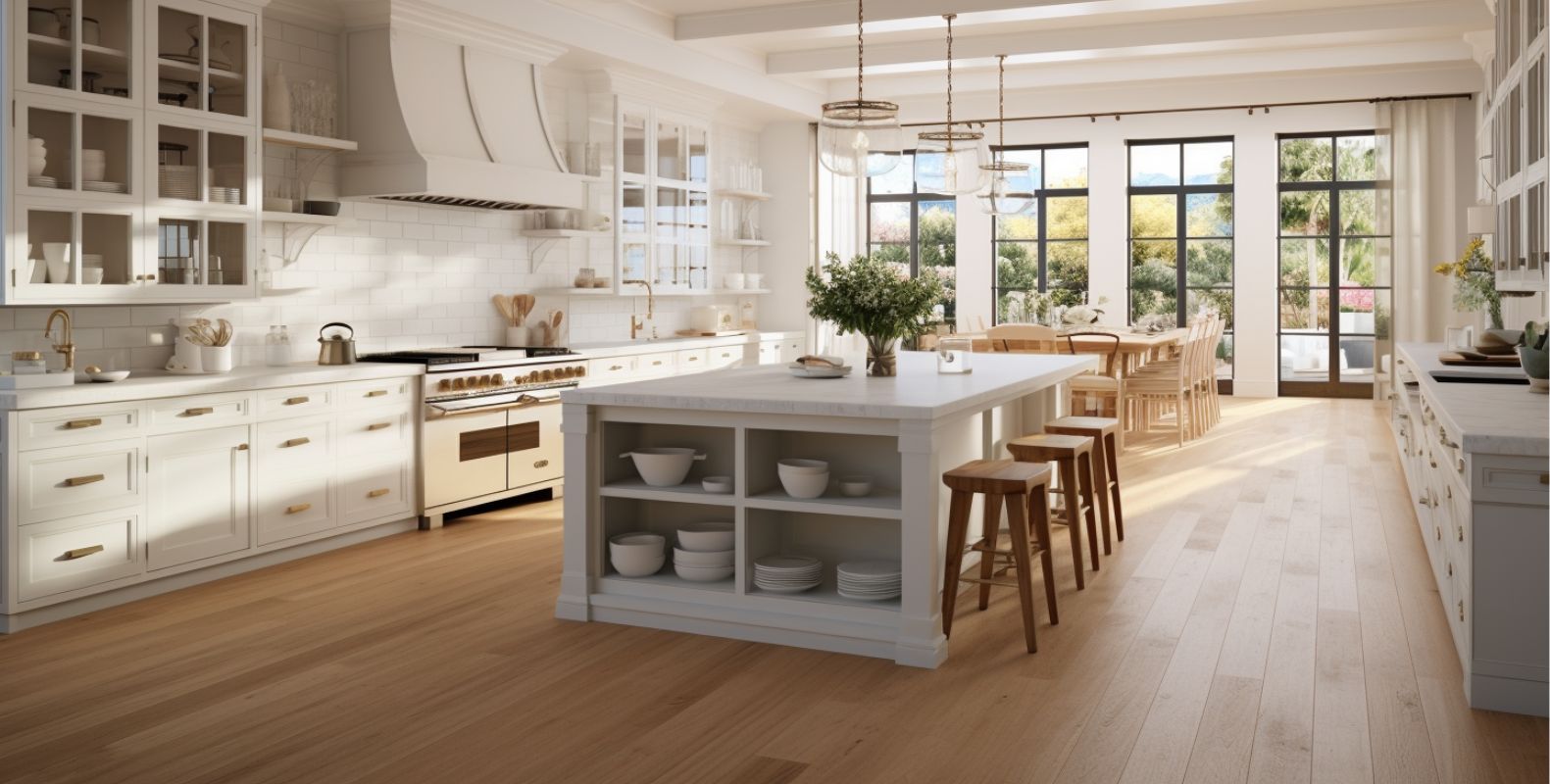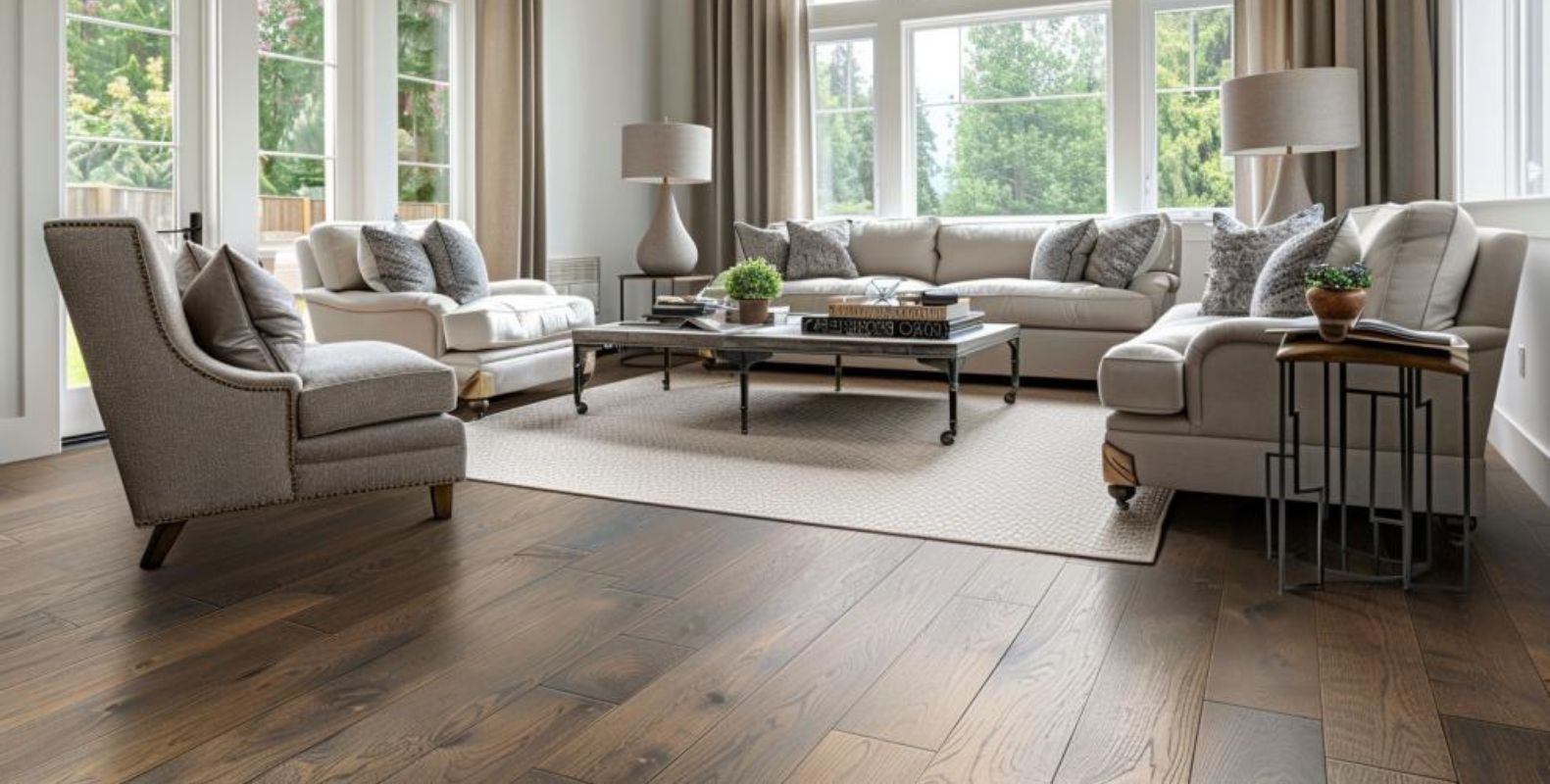Sweeping Away Allergies: A Health-Centric Approach to Flooring Maintenance

Exploring the impact of dust and allergens on health, how clean floors can reduce allergic reactions, strategies for minimizing allergens in your living spaces, and tips for incorporating flooring maintenance into your routine can all be daunting tasks, but with the right knowledge and tools, they can be simplified. By understanding the direct correlation between dust and other allergens, and the impact it can have on health and comfort, individuals can inform themselves on how to better maintain floors and living spaces to reduce allergies and improve living spaces.
Exploring the Impact of Dust and Allergens on Health
Dust and allergens can have a major impact on the health of individuals. However, understanding how these irritants can affect someone is crucial to a healthier lifestyle. Dust and allergens are foreign particles that enter an individual’s body through their respiratory system or by contact with the skin. These particles can come from a variety of sources, including dust mites, pet dander, weeds, mold and pollens.
Inhaling these particles has been linked to various respiratory problems, such as asthma, bronchitis, sinusitis, and hay fever, all of which can be quite uncomfortable and severely affect someone’s quality of life. Similarly, particles that come into contact with the skin often cause inflammation and irritation. Therefore, individuals should take precautionary measures to reduce their contact with these allergens as much as possible.
Moreover, those who suffer from allergies can have difficulty breathing when exposed to high levels of dust or allergens. This is because the body’s immune system sees these particles as a threat, initiating a chain of reactions that can lead to a severe allergic reaction. In addition, individuals with allergies are also often prone to asthma attacks as a result of the additional stress the body experiences when attempting to filter the allergen from the environment.
On the other hand, those looking to minimize the effect these particles have on their health should look to keep their home as free of dust and allergens as possible. Vacuuming and dusting often can help reduce the amount of accumulation of these particles in the home, while keeping windows and doors closed when outdoors can help to keep pollen and other outdoor allergens out. Furthermore, moist dusting furniture can help to reduce the accumulation and movement of dander and other irritants.
For instance, those who live in areas with high levels of pollen or other allergens can also consider an air purifier to help reduce the amount of allergens carried through the air. By running the purifiers regularly, these individuals can help create a healthier environment in their home, leading to reduced irritation and discomfort.
In contrast, those living in areas with severe droughts due to low precipitation may need to purchase indoor plants to help humidify the air and keep dust levels to a minimum. This, in combination with regular dusting and vacuuming, can help to reduce the impact dust has on them.
As a result, individuals should take the time to understand how these irritants can affect their health and take appropriate measures to ensure a healthy lifestyle. Consequently, by understanding the sources of these allergens and taking preventive methods, individuals can reduce the effect dust and allergens have on their health.
How Clean Floors Can Reduce Allergic Reactions
Having clean floors can dramatically reduce irritants and allergens that could trigger allergic reactions. Allergic reactions can range from mild to severe, and it is important to minimize their contributors to ensure a safe and comfortable environment for affected individuals. Floors can easily become breeding grounds for many of these particles, and so maintaining cleanliness in this area is essential.
On the other hand, when cleaning floors it is essential to remove any dust, pet dander, and other particles that could be causing an allergic reaction. Vacuuming regularly can be used to collect these particles, and it is recommended to use a vacuum with a HEPA filter for optimal results. It is also important to clean away any debris left on the floor and scrub any sticky spots to avoid creating a hospitable environment for these allergens.
Furthermore, using the right cleaning agents can be critical when trying to reduce allergic reactions. Avoiding solutions that contain known allergens such as fragrances, dyes, and solvents is important. Similarly, one should be aware that some cleaning agents can emit toxic fumes that could further trigger a reaction.
Therefore, to ensure floors are as allergen free as possible, it is best to use natural cleaning agents that are non-toxic and will not emit harsh fumes. The use of vinegar and baking soda can be an effective way of cleaning floors and is much safer for those who have allergies. Other natural products such as lemon juice and essential oils can also be used.
Consequently, maintaining clean floors can be a key factor to reducing allergic reactions. Not only is it essential to vacuum regularly and use the right cleaning agents, but it is also beneficial to use a range of natural products when cleaning floors. Following these steps can drastically reduce the number of allergens in the environment, and therefore provide a safer environment for individuals affected by allergies.
Strategies for Minimizing Allergens in Your Living Spaces
Allergens are ubiquitous in both indoor and outdoor living spaces and can cause a range of health issues for people who are allergic to them. However, by taking a few preventative measures, it is possible to minimize allergens in your living spaces.
The first strategy is to carefully monitor pests. These can carry allergens with them and should be prevented from entering the spaces, or removed if they find their way inside. Traps, lures, and other preventative measures can help to keep pests out. Moreover, if you find a pest invasion, contact a pest control service to handle the issue quickly and safely.
On the other hand, it is also important to prevent existing allergens from collecting in your living spaces. Vacuuming carpets, rugs, and soft furniture regularly can trap the allergens, as well as regularly changing air filters for the HVAC system. In addition, a dehumidifier can help to prevent dust mites, which are one of the most common causes of indoor allergies.
Furthermore, pet owners should also be cognizant of potential allergens coming from their animals. Regular bathing and brushing can help to reduce pet dander, and keeping hard surfaces and pet beds clean is also important. Additionally, it is beneficial for pet owners to keep their pets out of certain rooms depending on the allergies of people in their household.
Finally, opening windows to let in fresh air can help to minimize the exposure to allergens. Make sure to remove any screens from windows that may be damaged and opt for washable curtains or blinds, to reduce the amount of allergens on these surfaces, as well. Similarly, wiping down surfaces with a microfiber cloth with water can help to reduce the buildup of allergens.
As a result of these strategies, it is possible to minimize the amount of allergens in living spaces and create a healthier environment. Consequently, people suffering from allergies can breathe easier knowing that they have taken steps to protect themselves.
Tips for Incorporating Flooring Maintenance into your Routine
Regular floor maintenance is essential for keeping a space looking its best and preserving the investment of the flooring. In addition, it can also provide better safety for those living in the space. Therefore, incorporating floor maintenance into a regular routine is crucial for overall upkeep.
One of the easiest ways to incorporate floor maintenance is to start with debris that accumulates on the floor. This can include dirt, dust, and other debris, such as pet hair. A vacuum or sweep should be used at least once a week in order to keep up with the amount of debris that settles on the floor, as it can lead to scratches and other long-term damage. Moreover, it’s important to have the correct vacuum nozzle and rug washing equipment if the flooring is made of carpets or rugs.
However, cleaning debris alone is not enough and regular washing is necessary as well. Depending on the flooring material, washing solutions should be used periodically in order to keep dirt and dust from settling into the surface of the flooring. Some flooring materials, such as hardwood, should be further treated with Polyurethane coating to prevent further damage. For tile floors, there should be a grout sealer applied occasionally in order to protect and retain the color of the grouting. In contrast, natural stone floors need to be periodically polished and sealed to keep its color and sheen.
Similarly, waxing should happen on a routine basis, preferably every six to twelve months. Failing to wax the floor can result in scratches and dulling of the floor’s finish. For this reason, it is important to regularly wax the flooring and check for any wear and tear.
Floor maintenance can be time consuming if it’s not incorporated into your regular routine. However, with regular and attentive care, flooring can last for years without requiring extensive repairs or replacement. Therefore, it is important to incorporate regular floor maintenance into your routine in order to keep the flooring looking its best and preserving it for the long run.
Conclusion
In conclusion, it is evident that understanding the impact of dust and allergens on health is a crucial part of maintaining a healthy living space. Utilizing clean floors is an effective way to reduce allergic reactions and minimizing allergens in our living spaces is key. A routine of regular flooring maintenance can help eliminate allergens from the environment, and incorporating tips such as frequently vacuuming carpets, and using a damp mop on hard floors to give shine and reduce dirt can help keep your floors clean and hygienic. By doing this, we will be able to reduce the impact of allergens on our health.
FAQ
How do different flooring types trap allergens, and which ones are most allergy-friendly?
Different flooring types have unique characteristics that can either trap or resist allergens. Carpets, for instance, have fibers that can trap dust mites, pet dander, pollen, and other allergens. While they can act as a filter by capturing these particles, if not cleaned regularly, they can release them back into the air during foot traffic or vacuuming. On the other hand, hard surfaces like hardwood, laminate, or tile don’t harbor allergens as easily. They can be swept clean, making them more allergy-friendly. Among all, hardwood and tile are usually considered the most allergy-friendly because they don’t have fibers for allergens to cling to and are easiest to keep clean.
What are the most common allergens found on floors and how can I effectively combat them?
Floors can host a variety of allergens including dust mites, pet dander, pollen, and mold. The most effective way to combat these allergens is through regular cleaning. For carpets, vacuuming at least once a week with a HEPA-filtered vacuum cleaner is essential. For hard floors, sweeping or dry mopping daily and wet mopping weekly can help. Ensure your home is well-ventilated to reduce humidity and deter mold growth. For households with pets, more frequent cleaning may be required.
How often should I clean my floors to minimize allergen accumulation and what tools should I use?
Ideally, hard floors (like hardwood or tile) should be swept or dry mopped daily to remove dust and allergens and be wet mopped once a week. Carpets should be vacuumed at least once a week, and more frequently if you have pets. Using a vacuum cleaner with a HEPA filter can ensure even the tiniest allergen particles are trapped and not released back into the air. Annually or biannually deep cleaning or steam cleaning for carpets is also advisable.
Are there specific cleaning products or natural solutions that are both allergy-friendly and effective for floor maintenance?
\Absolutely! Many people with allergies opt for natural cleaning solutions to avoid irritating chemicals. A mixture of water and white vinegar can be an effective solution for cleaning tile and hardwood floors. For carpets, baking soda can be sprinkled, left for a few hours, and then vacuumed up to help neutralize odors and remove surface allergens. When choosing commercial cleaning products, look for those labeled hypoallergenic or designed for sensitive skin. They tend to have fewer irritants and can be gentler on both your floors and your respiratory system.






